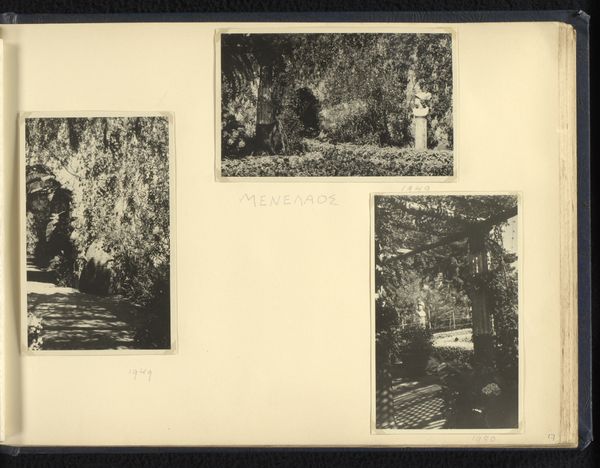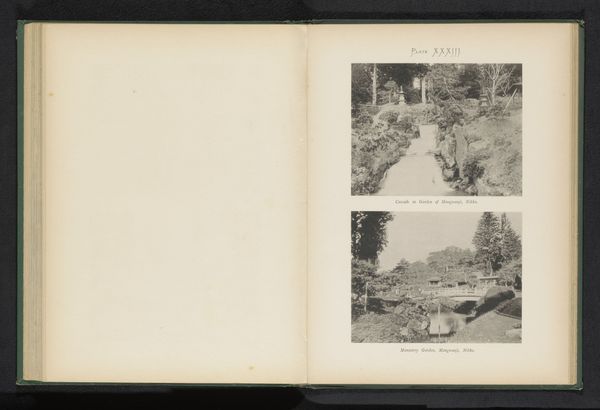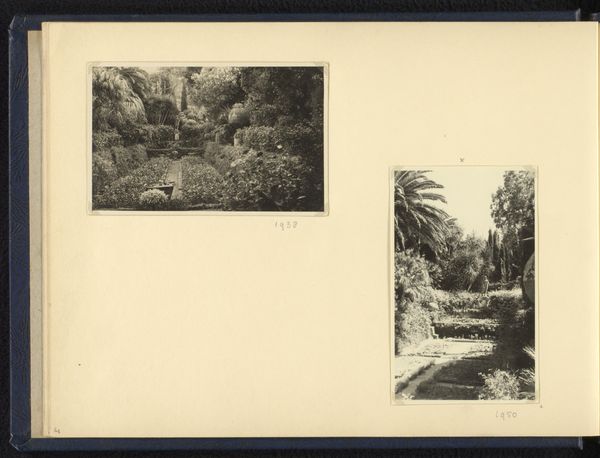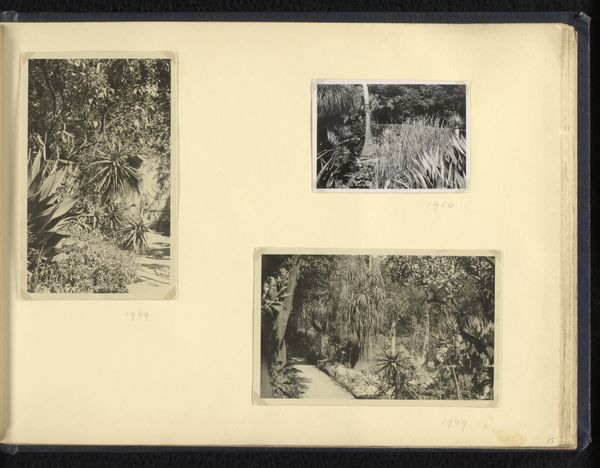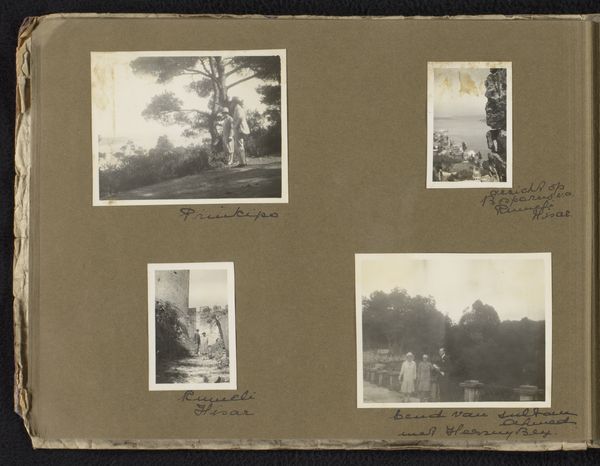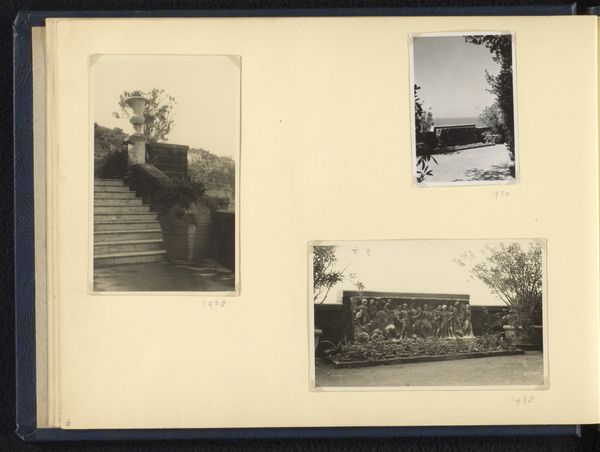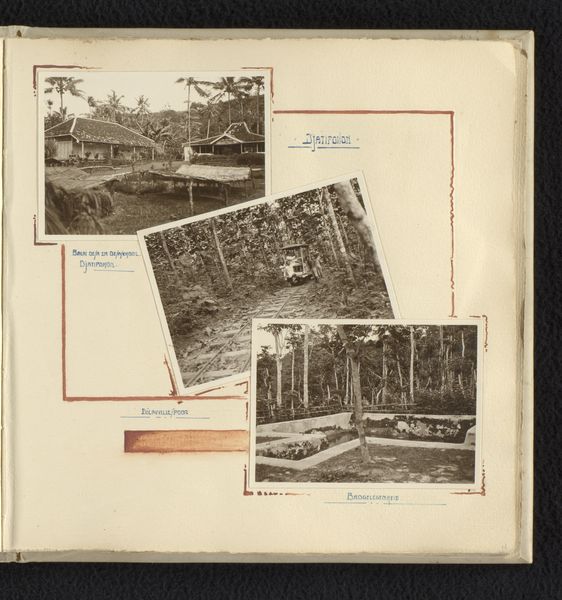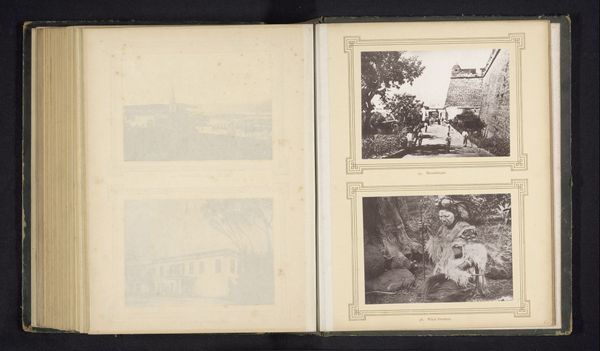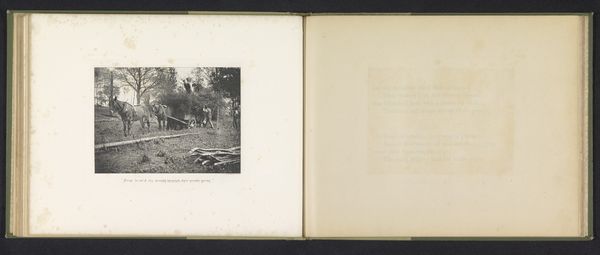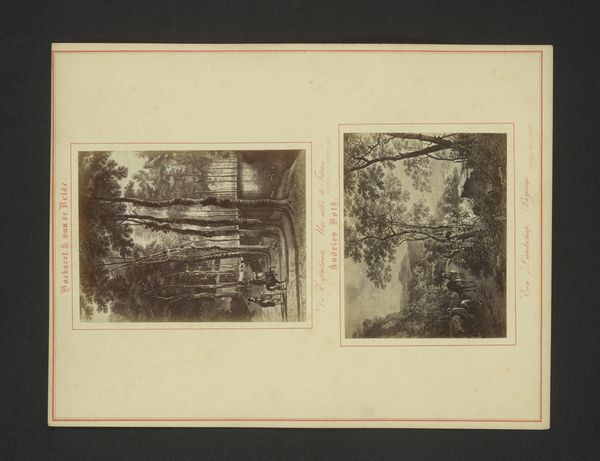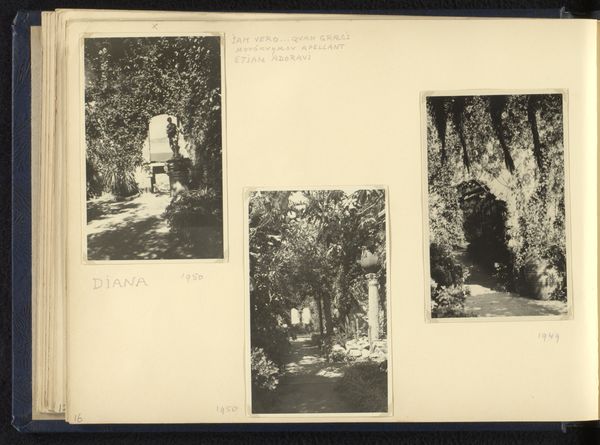
Drie foto's van de tuin van Villa Tritone en een gezelschap op het bordes van de villa, Sorrento 1938 - 1950
0:00
0:00
photography, albumen-print
#
portrait
#
landscape
#
photography
#
genre-painting
#
albumen-print
Dimensions: height 232 mm, width 336 mm
Copyright: Rijks Museum: Open Domain
Editor: This is a page from an album by Norbert van den Berg, featuring three albumen prints taken between 1938 and 1950, titled "Drie foto's van de tuin van Villa Tritone en een gezelschap op het bordes van de villa, Sorrento". There's a definite air of leisure and nostalgia about these scenes. What stands out to you in terms of how these images speak to each other? Curator: Immediately, I see the persistent echo of classical motifs. Notice the sculpted lions flanking the steps in the first photograph, invoking a sense of established power and tradition. Then there's the garden staircase, a very structured pathway, alluding to an upward, perhaps spiritual, journey. Does this formal arrangement communicate something specific to you? Editor: Well, it makes me wonder about control versus nature. The cultivated garden contrasting with something wilder. The staircase makes me think of climbing toward some enlightenment. Curator: Precisely! The villa garden as a microcosm of a world ordered and understood. Consider the Latin inscription near the water pond—"Hoc quondam rure solebam/ Najadas alterna sollicitare manu"—a carefully chosen fragment layering meaning and imbuing the landscape with literary significance, linking it back to a classical, perhaps even idyllic, past. What feelings does that evoke for you, considering it’s a twentieth-century photograph? Editor: It feels like a yearning, maybe for a simpler time or a lost ideal. This almost carefully staged classical paradise creates a bit of longing in me. Curator: Yes, it speaks to cultural memory, the enduring human desire to connect with what came before, to locate ourselves within a continuum of meaning. The staged, relaxed gathering adds a social element, almost a timeless scene brought to life through photography. Editor: So, it’s not just about a pretty place, but about our relationship to history and our search for meaning? Curator: Precisely. By visually linking to the classical past through repeated symbols and themes, the photographs evoke more than just surface aesthetics; they evoke continuity. Editor: That's given me so much to think about! I hadn't considered the symbolism running through it all. Curator: These echoes of the past, made visible in a new medium, speak volumes about the power of visual language.
Comments
No comments
Be the first to comment and join the conversation on the ultimate creative platform.
